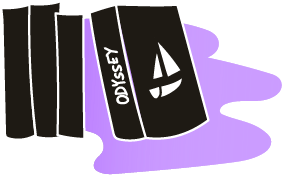Title of the resource
Title of the resource in english
Publisher
CET
Original language
Target and Age Group
6th grade, 11-12 year olds
Link to resource
A Very Good Word
Accessed on September 4, 2019
Author of the Entry:
Ayelet Peer, Bar- Ilan University, ayelet.peer@biu.ac.il
Peer-reviewer of the Entry:
Lisa Maurice, Bar-Ilan University, lisa.maurice@biu.ac.il
Second Peer-reviewer of the Entry:
Susan Deacy, University of Roehampton, s.deacy@roehampton.ac.uk
Kotar/CET (Center for Educational Technology)
The Center for Educational Technology is a nonprofit organization.
From the CET website: CET wishes to empower educational systems around the globe through sharing our knowledge and expertise to create the learning environments of the future. CET’s approach to innovation has always been to harmonize pedagogical needs with the evolution of new technology.
Contents & Purpose
This book offers study and practice of linguistic themes as part of Hebrew language studies. The book offers variety of texts, online activities and many exercises for the students and teachers in order to enhance literacy, reading skills and reading comprehension. The texts include traditional Jewish sources, Israeli authors and poets and general texts on a variety of subjects including Greek mythology.
Further comments
The Greek mythology texts in this book include a general introduction to ancient Greek mythology and also four adaptations of Greek myths: Stealing of Fire, Pandora ’s Box, the Wooden Horse, and Midas’ golden touch. The stories are accompanied by leading questions involving reading comprehension, pictures and online activities. The activities also explain common idioms whose origin is from the stories (“golden touch’, “Trojan horse”, “Pandora’s box”). Thus they connect between common idioms and their ancient origin and explain the stories behind the idioms.
As a concluding activity, the children are encouraged to create their own story in the style of the Greek myths.
The online activities also include common idioms of ancient Greek origin and from the Greek theatre. These idioms include: Golden touch, Panic, Sisyphean work, resting on your laurels, Achilles’ heel. They also explain the concept of the Muse and the use of mythology in marketing. This activity also refers to the following myths: Pan the shepherds’ god, Atlas who carries the world on his shoulders, Achilles’ heal, Narcissus, Medusa and her gaze that turns to stone, the Sirens’ voices
These texts are aimed to accompany the regular class lessons and offer more practice for the students in class or at home.
The emphasis is on reading comprehension, familiarizing the students with specific idioms in Hebrew, and understanding the characteristics of Greek myths, as well as the creation of an original myth by the students. The entire activity, including all the texts and exercises, would take about an hour, with additional time for story-writing.


